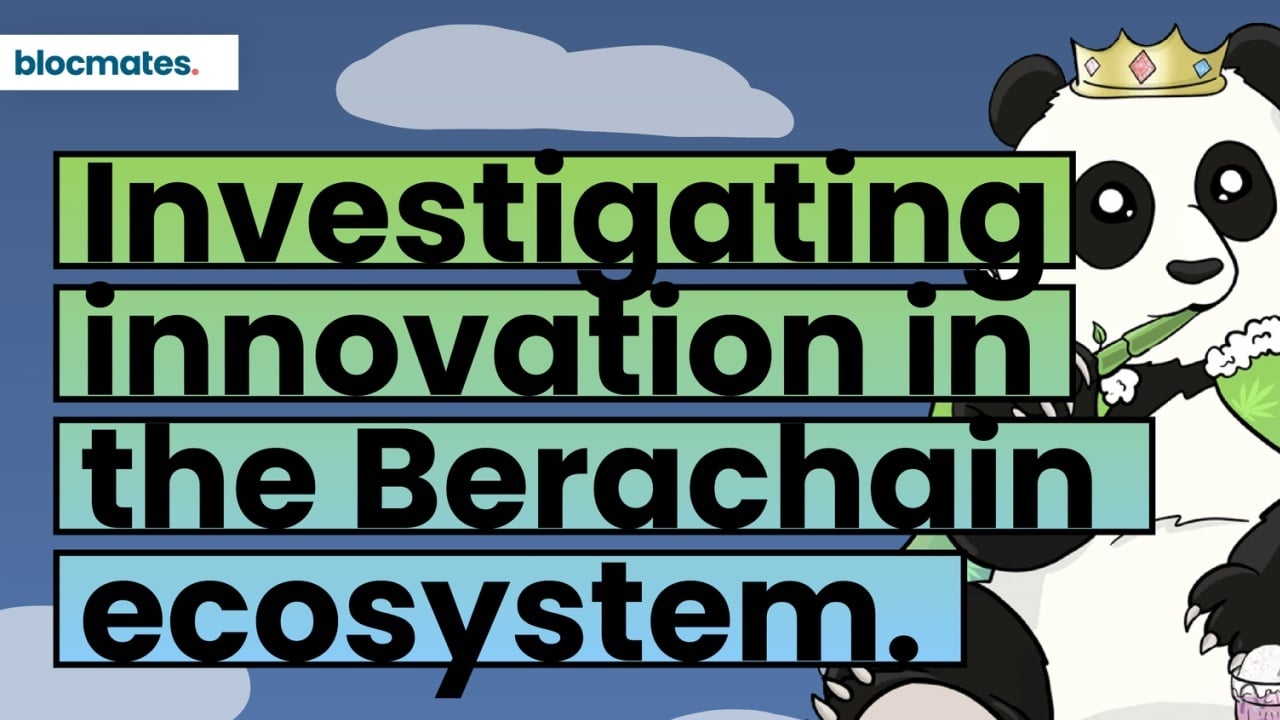“Many of the characteristics that make for successful organizations also sow the seeds of inertia when it comes to innovation.” – Clayton Christensen.

Berachain is a Layer 1 EVM-compatible blockchain built on the Cosmos-SDK and powered by a novel consensus method called Proof-of-Liquidity (PoL).
In this article, we will explore some of the innovative aspects of Berachain, including its unique consensus model, native consumer applications, and B2B2C app innovations.
We will also highlight some of the interesting non-consumer applications being built on the chain.
Berachain in One MinuteAs you may know from the swarm of content we have put out on these guys, on a high level, we can describe Berachain as a Layer 1 EVM-compatible blockchain built on top of the cosmos-SDK using a novel consensus method of Proof-of-Liquidity (PoL).
Sounds a bit posh, doesn’t it? Mike did a solid piece on PoL and Berachain as a whole, which you can read here.
But we’re always game for a fresh breakdown if you need a brush-up, so here goes.
Basically, a handful of existing L1s function using the proof-of-stake consensus mechanism, which allows the use of native tokens as collateral to get involved in the validation process of a network chain.
However, this consensus mechanism has limitations, including centralization risks, infrastructural bottlenecks or stiffness, reduced composability, and a rift between validators and protocols built on the network.
Berachain introduces proof-of-liquidity (POL) as an alternative to the proof-of-stake (POS) consensus style. With POL, protocols, and validators are well aligned through incentives at the consensus level, and the security of the network is ensured using liquidity.
For a thorough overview of Bera, we recommend skimming our previous articles and videos on the POL chain.
Ground Zero Innovation on BerachainFor those familiar with Berachain, the first sign of innovation lies in its choice of consensus model.
The PoL consensus model supports three core (native) dapps: a decentralized exchange (DEX), a lending and borrowing protocol, and a perpetual market (BEX, BEND, and BERP).
This integration enhances the network’s functionality from the ground up, enabling a direct relationship between validators and protocols right from the start.
This approach is quite unlike any other Layer 1 out there. Berachain’s model ensures that the native apps are integrated from day one, with built-in utilization. This allows the native apps to benefit through shared network activity.
Consumer App Innovation on BerachainGiven the recent trend of user drought on newly launched L2s and L1s (study Starknet), we consider consumer apps a focal point of our investigations as they are a veritable source to gauge potential user adoption.
At the moment, there are quite a good number of consumer apps that exist on Berachain, with most of them in the testnet phase of their development and, like us, counting down the days to the Berachain mainnet.
However, for this investigation, we will highlight a few apps that we find quite innovative in terms of their value offering and strategic positioning to align with the foundational innovation (PoL) and flywheel on Berachain.
ShogunThe app is being built as an intent-centric DeFi application that allows traders to maximally extract value, known as TEV, which represents the difference between a trader’s requested limit price and the actual price achieved.
How? Shogun scans multiple networks through an algorithm (solvers), identifying trader extractable value (TEV).
How does this benefit end users? Trading with Shogun abstracts gas fees, wallets, bridges, and so much more, thereby improving the user experience for traders.
Based on established standards in on-chain trading, Shogun can be compared to Hyperliquid, but it offers a significantly enhanced user experience.
It’s fair to say that one of the issues with on-chain consumer apps across several networks is that they’re being built with only the average crypto user in mind. We fail to see how this unambitious approach to developing on-chain applications spells a bright future for the entire industry.
Shogun, however, is different. In terms of goals, the project is attempting to emulate the feat of Web2 fintech giant Plaid by making it simple for non-crypto companies to integrate DeFi.
ExponentsThese guys are innovating along the lines of the derivatives market. The issue they’re trying to solve here is an obvious one: many tokens exist, but very few have derivatives, mainly because of the nuances that price oracles bring to the table.
Exponents view this as the bottleneck to solve for the on-chain derivatives market to take off.
To solve this problem, they’re building an oracle-less and permissionless leverage derivatives protocol that allows for the creation and trading (longing and shorting) of derivative tokens, similar to how Uniswap’s existence allowed for the spot-
以上是Discover the Developments in Berachain’s Ecosystem的詳細內容。更多資訊請關注PHP中文網其他相關文章!




